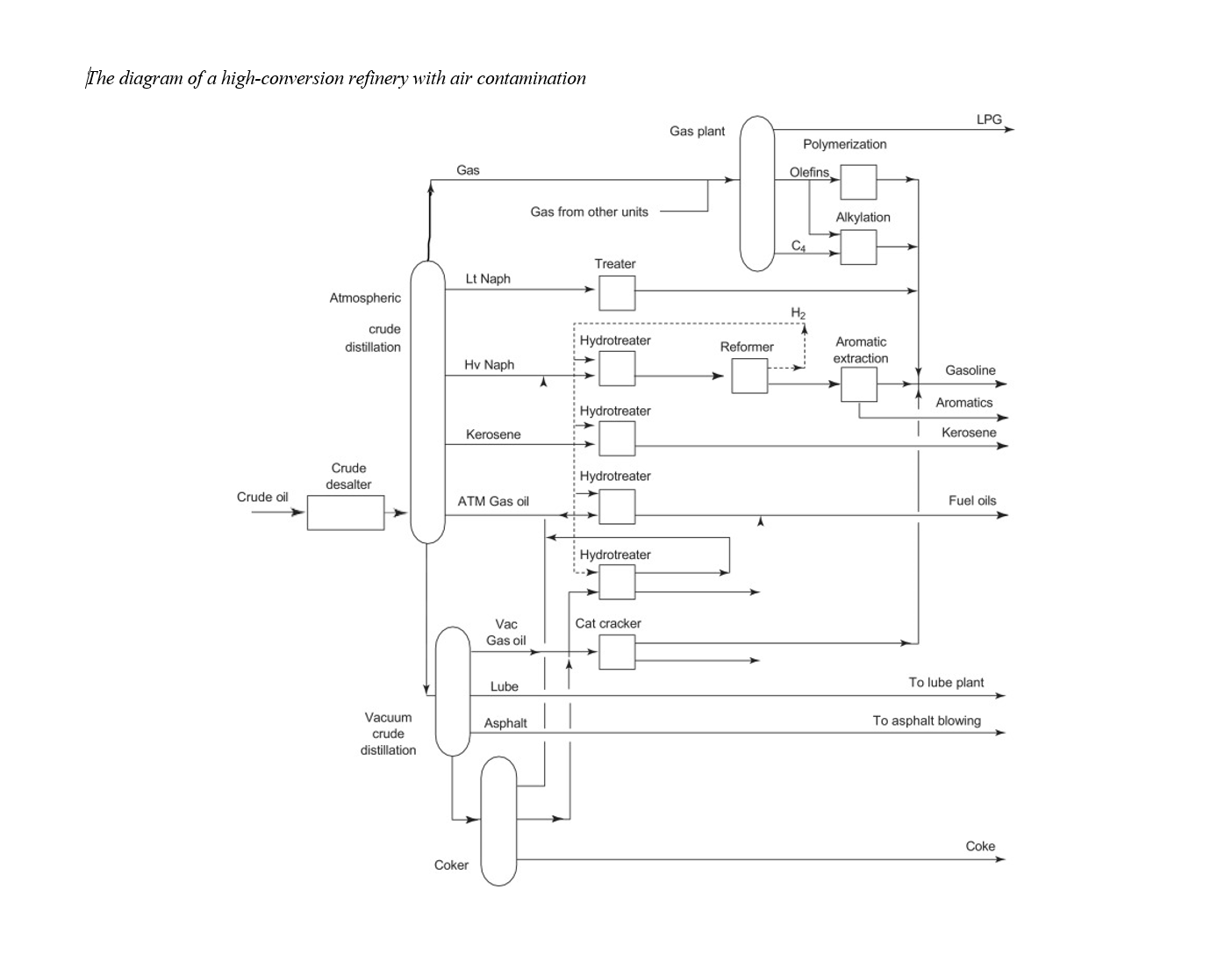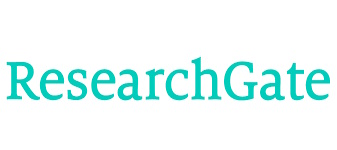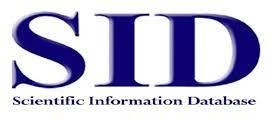The Role of Health Risk Assessment Techniques in Controlling Air Pollution: A Mini Review
Keywords:
Health Risk Assessment, Air pollution, Refinery industry, NO2, SO2, COAbstract
Health risk assessment is a method that can be used to determine the potential effects of a risk on the well-being of an individual, a group of individuals, or a whole community. In order to comprehend the potential adverse impacts on health, factual and technical information is employed. In the current mini-review, the updated publications regarding the issue of HRA are systematically reviewed based on the performance and purposes. The main sources of extracting paper are Elsevier and Springer in the Google Scholar and Sience Direct. Volatile Aromatic Hydrocarbons (VAHs) are a significant cause of pollution in petrochemical and petroleum refineries. It is a known human carcinogen, and epidemiological investigations have demonstrated that it, even at low doses, contributes to the development of both acute and chronic leukemia. Chronic exposure to high levels of benzene can result in more serious negative health effects like blood illness, haematotoxicity, genotoxicity, an increase in persistent chromosome aberrations, problems with reproduction, and mortality. Acute exposure to high levels of benzene can also affect the brain and spinal cord and cause headaches, nausea, and dizziness. The importance of HRA in the refinery industry is highlighted in the previous works. However, the use of Artifical Intelligence techniques has been rarely considered as an approach. The gaps and shortcomings obtained in this review can be starting point for the future investigations.
Downloads
References
1. Maji KJ, Dikshit AK, Deshpande A. Human health risk assessment due to air pollution in 10 urban cities in Maharashtra, India. Cogent Environmental Science. 2016;2(1):1193110. [DOI]
2. Adar SD, Filigrana PA, Clements N, Peel JL. Ambient coarse particulate matter and human health: a systematic review and meta-analysis. Current environmental health reports. 2014;1:258-74. [PMID: 25152864] [PMCID: PMC4129238] [DOI]
3. Amann M, Bertok I, Borken-Kleefeld J, Cofala J, Hetelingh J-P, Heyes C, et al. Policy scenarios for the revision of the thematic strategy on air pollution. 2013.
4. Amann M, Bertok I, Borken-Kleefeld J, Cofala J, Heyes C, Höglund-Isaksson L, et al. Cost-effective control of air quality and greenhouse gases in Europe: Modeling and policy applications. Environmental Modelling & Software. 2011;26(12):1489-501. [DOI]
5. Anenberg SC, Belova A, Brandt J, Fann N, Greco S, Guttikunda S, et al. Survey of ambient air pollution health risk assessment tools. Risk analysis. 2016;36(9):1718-36. [PMID: 26742852] [DOI]
6. Anenberg SC, West JJ, Fiore AM, Jaffe DA, Prather MJ, Bergmann D, et al. Intercontinental impacts of ozone pollution on human mortality. ACS Publications; 2009.
7. Hassan Bhat T, Jiawen G, Farzaneh H. Air Pollution Health Risk Assessment (AP-HRA), Principles and Applications. International Journal of Environmental Research and Public Health. 2021;18(4):1935. [PMID: 33671274] [PMCID: PMC7922529] [DOI]
8. Lee JY, Kim H. Ambient air pollution-induced health risk for children worldwide. The Lancet Planetary health. 2018;2(7):e285-e6. [PMID: 30074888] [DOI]
9. Schlesinger RB, Graham JA. Health effects of atmospheric acid aerosols: a model problem in inhalation toxicology and air pollution risk assessment. Fundamental and Applied Toxicology. 1992;18(1):17-24. [PMID: 1601205] [DOI]
10. Surzhikov V, Surzhikov D, Golikov R. Atmospheric air pollution in an industrial city as the factor of non-carcinogenic risk for health of communities. Gigiena i Sanitariia. 2013(1):47-9.
11. Kenessary D, Kenessary A, Adilgireiuly Z, Akzholova N, Erzhanova A, Dosmukhametov A, et al. Air Pollution in Kazakhstan and Its Health Risk Assessment. Annals of global health. 2019;85(1):133. [PMID: 31750082] [PMCID: PMC6838766] [DOI]
12. Folinsbee LJ. Human health effects of air pollution. Environmental health perspectives. 1993;100:45-56. [PMID: 8354181] [PMCID: PMC1519570] [DOI]
13. Adebiyi FM. Air quality and management in petroleum refining industry: A review. Environmental Chemistry and Ecotoxicology. 2022;4:89-96. [DOI]
14. Kayastha V, Patel J, Kathrani N, Varjani S, Bilal M, Show PL, et al. New Insights in factors affecting ground water quality with focus on health risk assessment and remediation techniques. Environmental Research. 2022;212:113171. [PMID: 35364042] [DOI] [DOI]
15. Aitani AM. Oil refining and products. Encyclopedia of energy. 2004;4:715-29. [DOI]
16. Stell J. 2002 Worldwide Refining Survey. Oil & Gas J. 2002;100(52):68-111.
17. Silvy RP. Global refining catalyst industry will achieve strong recovery by 2005. Oil & gas journal. 2002;100(36):48-. [DOI]
18. https://trends.google.com/trends/explore?date=now%201-d&q=health%20risk%20assessment&hl=en-US.
19. Funari E, Testai E. Human health risk assessment related to cyanotoxins exposure. Critical reviews in toxicology. 2008;38(2):97-125. [PMID: 18259982] [DOI]
20. McKenzie LM, Witter RZ, Newman LS, Adgate JL. Human health risk assessment of air emissions from development of unconventional natural gas resources. Science of The Total Environment. 2012;424:79-87. [DOI]
21. Liu X, Song Q, Tang Y, Li W, Xu J, Wu J, et al. Human health risk assessment of heavy metals in soil–vegetable system: a multi-medium analysis. Science of the total environment. 2013;463:530-40. [PMID: 23831799] [DOI]
22. Schwab BW, Hayes EP, Fiori JM, Mastrocco FJ, Roden NM, Cragin D, et al. Human pharmaceuticals in US surface waters: a human health risk assessment. Regulatory Toxicology and Pharmacology. 2005;42(3):296-312. [PMID: 15979221] [DOI]
23. Ruby MV, Schoof R, Brattin W, Goldade M, Post G, Harnois M, et al. Advances in evaluating the oral bioavailability of inorganics in soil for use in human health risk assessment. Environmental science & technology. 1999;33(21):3697-705. [DOI]
24. Wei W, Lv Z, Yang G, Cheng S, Li Y, Wang L. VOCs emission rate estimate for complicated industrial area source using an inverse-dispersion calculation method: A case study on a petroleum refinery in Northern China. Environmental Pollution. 2016;218:681-8. [PMID: 27522407] [DOI]
25. Liu R, Jadeja RN, Zhou Q, Liu Z. Treatment and remediation of petroleum-contaminated soils using selective ornamental plants. Environmental engineering science. 2012;29(6):494-501. [PMID: 22693416] [PMCID: PMC3363014] [DOI]
26. Civan MY, Elbir T, Seyfioglu R, Kuntasal ÖO, Bayram A, Doğan G, et al. Spatial and temporal variations in atmospheric VOCs, NO2, SO2, and O3 concentrations at a heavily industrialized region in Western Turkey, and assessment of the carcinogenic risk levels of benzene. Atmospheric Environment. 2015;103:102-13. [DOI]
27. Thongthammachart T, Jinsart W. Estimating PM2. 5 concentrations with statistical distribution techniques for health risk assessment in Bangkok. Human and Ecological Risk Assessment: An International Journal. 2020;26(7):1848-63. [DOI]
28. Kharzi R, Chaib R, Verzea I, Akni A. A Safe and Sustainable Development in a Hygiene and Healthy Company Using Decision Matrix Risk Assessment Technique: a case study. Journal of Mining and Environment. 2020;11(2):363-73.
29. Asante-Duah K. Hazardous waste risk assessment: CRC Press; 2021.
30. Ajith S, Sivapragasam C, Arumugaprabu V. Analysis on constructional hazards, risk assessment techniques and safety helmets in construction sites. AIP Conference Proceedings. 2019;2128(1). [DOI]
31. Panneerselvam B, Ravichandran N, Kaliyappan SP, Karuppannan S, Bidorn B. Quality and Health Risk Assessment of Groundwater for Drinking and Irrigation Purpose in Semi-Arid Region of India Using Entropy Water Quality and Statistical Techniques. Water. 2023;15(3):601. [DOI]
32. Nag R, Cummins E. Human health risk assessment of lead (Pb) through the environmental-food pathway. Science of the Total Environment. 2022;810:151168. [PMID: 34710405] [DOI]
33. Wang Y, Li P. Appraisal of shallow groundwater quality with human health risk assessment in different seasons in rural areas of the Guanzhong Plain (China). Environmental Research. 2022;207:112210. [PMID: 25568938] [DOI]
34. Panneerselvam B, Muniraj K, Pande C, Ravichandran N, Thomas M, Karuppannan S. Geochemical evaluation and human health risk assessment of nitrate-contaminated groundwater in an industrial area of South India. Environmental Science and Pollution Research. 2022;29(57):86202-19. [PMID: 34748179] [DOI]
35. Guo J, Zhang Y, Liu W, Zhao J, Yu S, Jia H, et al. Incorporating in vitro bioaccessibility into human health risk assessment of heavy metals and metalloid (As) in soil and pak choi (Brassica chinensis L.) from greenhouse vegetable production fields in a megacity in Northwest China. Food chemistry. 2022;373:131488. [PMID: 34768107] [DOI]
36. Sengar A, Vijayanandan A. Human health and ecological risk assessment of 98 pharmaceuticals and personal care products (PPCPs) detected in Indian surface and wastewaters. Science of the Total Environment. 2022;807:150677. [PMID: 34599960] [DOI]
37. Peng J-y, Zhang S, Han Y, Bate B, Ke H, Chen Y. Soil heavy metal pollution of industrial legacies in China and health risk assessment. Science of the Total Environment. 2022;816:151632. [PMID: 34780826] [DOI]
38. Shams M, Tavakkoli Nezhad N, Dehghan A, Alidadi H, Paydar M, Mohammadi AA, et al. Heavy metals exposure, carcinogenic and non-carcinogenic human health risks assessment of groundwater around mines in Joghatai, Iran. International Journal of Environmental Analytical Chemistry. 2022;102(8):1884-99. [DOI]
39. Chen L, Wang J, Beiyuan J, Guo X, Wu H, Fang L. Environmental and health risk assessment of potentially toxic trace elements in soils near uranium (U) mines: A global meta-analysis. Science of The Total Environment. 2022;816:151556. [PMID: 34752878] [DOI]
40. Senathirajah K, Attwood S, Bhagwat G, Carbery M, Wilson S, Palanisami T. Estimation of the mass of microplastics ingested–A pivotal first step towards human health risk assessment. Journal of Hazardous Materials. 2021;404:124004. [PMID: 33130380] [DOI]
41. Zainuddin N, Yusuff RC, Samy GN. Risk evaluation using nominal group technique for cloud computing risk assessment in healthcare. International Journal on Advanced Science Engineering and Information Technology. 2020;10(1):106-11. [DOI]
42. Adimalla N, Li P, Qian H. Evaluation of groundwater contamination for fluoride and nitrate in semi-arid region of Nirmal Province, South India: a special emphasis on human health risk assessment (HHRA). Human and ecological risk assessment: an international journal. 2018. [DOI]
43. Adimalla N, Wu J. Groundwater quality and associated health risks in a semi-arid region of south India: Implication to sustainable groundwater management. Human and ecological risk assessment: an international journal. 2019;25(1-2):191-216. [DOI]
44. Chen H, Mao W, Shen Y, Feng W, Mao G, Zhao T, et al. Distribution, source, and environmental risk assessment of phthalate esters (PAEs) in water, suspended particulate matter, and sediment of a typical Yangtze River Delta City, China. Environmental Science and Pollution Research. 2019;26:24609-19. [PMID: 31236858] [DOI]
45. Bank W. The world bank annual report 2010: The World Bank; 2010.
46. Ma W, Tai L, Qiao Z, Zhong L, Wang Z, Fu K, et al. Contamination source apportionment and health risk assessment of heavy metals in soil around municipal solid waste incinerator: A case study in North China. Science of the Total Environment. 2018;631:348-57. [PMID: 29525714] [DOI]
47. Kaur L, Rishi MS, Siddiqui AU. Deterministic and probabilistic health risk assessment techniques to evaluate non-carcinogenic human health risk (NHHR) due to fluoride and nitrate in groundwater of Panipat, Haryana, India. Environmental Pollution. 2020;259:113711. [PMID: 31891909] [DOI]
48. Mollakhalili-Meybodi N, Khorshidian N, Nematollahi A, Arab M. Acrylamide in bread: a review on formation, health risk assessment, and determination by analytical techniques. Environmental Science and Pollution Research. 2021;28(13):15627-45. [PMID: 33548042] [DOI]
49. Adimalla N, Venkatayogi S, Das S. Assessment of fluoride contamination and distribution: a case study from a rural part of Andhra Pradesh, India. Applied Water Science. 2019;9:1-15. [DOI]
50. Ma W, Tai L, Qiao Z, Zhong L, Wang Z, Fu K, et al. Contamination source apportionment and health risk assessment of heavy metals in soil around municipal solid waste incinerator: A case study in North China. Science of The Total Environment. 2018;631-632:348-57. [DOI]
51. Li Y, Xu EG, Liu W, Chen Y, Liu H, Li D, et al. Spatial and temporal ecological risk assessment of unionized ammonia nitrogen in Tai Lake, China (2004–2015). Ecotoxicology and Environmental Safety. 2017;140:249-55. [PMID: 28273624] [DOI]
52. Edokpolo B, Yu QJ, Connell D. Health Risk Assessment for Exposure to Benzene in Petroleum Refinery Environments. International Journal of Environmental Research and Public Health. 2015;12(1):595-610. [PMID: 25588154] [PMCID: PMC4306881] [DOI]
53. Zhang Z, Yan X, Gao F, Thai P, Wang H, Chen D, et al. Emission and health risk assessment of volatile organic compounds in various processes of a petroleum refinery in the Pearl River Delta, China. Environmental Pollution. 2018;238:452-61. [PMID: 29587216] [DOI]
54. Feng Y, Ding D, Xiao A, Li B, Jia R, Guo Y. Characteristics, influence factors, and health risk assessment of volatile organic compounds through one year of high-resolution measurement at a refinery. Chemosphere. 2022;296:134004. [PMID: 35181418] [DOI]
55. Naraki H, Keshavarzi B, Zarei M, Moore F, Abbasi S, Kelly FJ, et al. Urban street dust in the Middle East oldest oil refinery zone: Oxidative potential, source apportionment، and health risk assessment of potentially toxic elements. Chemosphere. 2021;268:128825. [PMID: 33160655] [DOI]
56. Bazeli J, Ghalehaskar S, Morovati M, Soleimani H, Masoumi S, Rahmani Sani A, et al. Health risk assessment techniques to evaluate non-carcinogenic human health risk due to fluoride, nitrite and nitrate using Monte Carlo simulation and sensitivity analysis in Groundwater of Khaf County, Iran. International Journal of Environmental Analytical Chemistry. 2022;102(8):1793-813. [DOI]
57. Kovochich M, Fung C-CD, Avanasi R, Madl AK. Review of techniques and studies characterizing the release of carbon nanotubes from nanocomposites: Implications for exposure and human health risk assessment. Journal of Exposure Science & Environmental Epidemiology. 2018;28(3):203-15.
58. Kumar M, Ramanathan A, Tripathi R, Farswan S, Kumar D, Bhattacharya P. A study of trace element contamination using multivariate statistical techniques and health risk assessment in groundwater of Chhaprola Industrial Area, Gautam Buddha Nagar, Uttar Pradesh, India. Chemosphere. 2017;166:135-45. [PMID: 27693874] [DOI]
59. Khaniabadi YO, Polosa R, Chuturkova RZ, Daryanoosh M, Goudarzi G, Borgini A, et al. Human health risk assessment due to ambient PM10 and SO2 by an air quality modeling technique. Process safety and environmental protection. 2017;111:346-54. [DOI]
60. Wang Y-B, Liu C-W, Wang S-W. Characterization of heavy-metal-contaminated sediment by using unsupervised multivariate techniques and health risk assessment. Ecotoxicology and Environmental Safety. 2015;113:469-76. [PMID: 34656636] [DOI]
61. Bodrud-Doza M, Islam SD-U, Rume T, Quraishi SB, Rahman MS, Bhuiyan MAH. Groundwater quality and human health risk assessment for safe and sustainable water supply of Dhaka City dwellers in Bangladesh. Groundwater for sustainable development. 2020;10:100374. [DOI]
62. Mahajan M, Gupta PK, Singh A, Vaish B, Singh P, Kothari R, et al. A comprehensive study on aquatic chemistry, health risk and remediation techniques of cadmium in groundwater. Science of The Total Environment. 2022;818:151784. [PMID: 34808189] [DOI]

Downloads
Additional Files
Published
Submitted
Revised
Accepted
License
Copyright (c) 2024 Reza Kiaei , Alireza Pardakhti, Mohammad Ali Zahed (Author)

This work is licensed under a Creative Commons Attribution-NonCommercial 4.0 International License.















